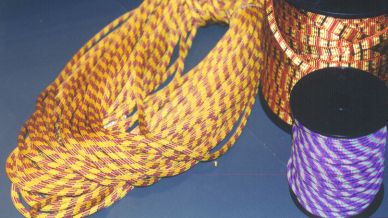The tensile strength is the load at which a new rope tested under laboratory conditions can be expected to break.
Tensile strength of silk rope.
For the other materials the strength is similar in compression and tension.
Synthetic fibre ropes are significantly stronger than their natural fibre counterparts they have a higher tensile strength they are more resistant to rotting than ropes created from natural fibers and they can be made to float on water.
Tensile strength is a measurement of the force required to pull something such as rope wire or a structural beam to the point where it breaks.
To estimate the minimum tensile strength of a new rope reduce the approximate average by 20.
There are three typical definitions of tensile strength.
Rope strength is the approximate average for new rope tested under astm test method d 6268.
Rope strength is the approximate average for new rope tested under astm test method d 6268.
To estimate the minimum tensile strength of a new rope reduce the approximate average by 20.
Yield strength the stress a material can withstand without.
The tensile strength of a material is the maximum amount of tensile stress that it can take before failure for example breaking.
The strength for all fibres is.
The strength for the bulk ceramics shown on the chart is compressive strength the tensile strength is typically only 10 of this value.
In brittle materials the ultimate tensile strength is close to the yield point whereas in ductile materials the ultimate tensile strength can be higher.

